Reach to Lukla by Flight for start the Trek
Lukla is a small town and the starting point for all treks to the Everest region, including the Short Everest Base Camp (EBC) Trek. It serves as a gateway with a small airstrip to Everest region trekking, and there is no road access from Kathmandu to Lukla. Trekkers must either fly from Kathmandu or Ramechhap or trek from Phaplu or Jiri. Regular flights to Lukla are operated by Tara Air, Summit Air, and Sita Air from Kathmandu or Ramechhap during the main trekking season.
During peak trekking months—March, April, May, September, October, and November—flights to Lukla may operate from Ramechhap/Manthali due to Nepal's aviation rules aimed at avoiding congestion and air traffic delays. Ramechhap Airport is approximately 144 kilometers east of Kathmandu and requires a 3 to 5-hour drive by private vehicles from Kathmandu.
Regarding luggage, there is a weight limit of 15 kg per passenger, including your hand-carry bag. It is advisable to keep your luggage under this limit to avoid extra charges. In case of an overload, your bag may be transported on a subsequent flight, so you may need to wait for a few hours at Lukla to receive the luggage.
Be prepared for potential delays or cancellations, as weather conditions can impact flights to and from Lukla. If flights are delayed or canceled, you may need to add a few extra days to your itinerary. We will do our best to adjust the itinerary as needed. If you do not have extra time before or after your trekking itinerary, you might consider taking a helicopter close to Lukla or shifting your trekking route to another region. Arranging for one or two additional days in your trip is highly recommended to accommodate potential flight delays or cancellations and to ensure you can board your pre-planned international flight.
Our trekking staffs are experienced and professional in both trekking and problem-solving, minimizing the chances of mishandling situations.
Best Time to Everest Base Camp Short Trek
The best time to visit the Everest Base Camp Short trek is during the two main trekking seasons namely spring and autumn season. These two seasons offer the most favorable weather and spectacular views, making your trekking experience enjoyable and memorable. We can do a short Everest Base Camp Trek throughout the year but the weather is quickly changeable during the summer and winter season, which makes it terrible to get to the target on time due to landslides and snow falls.
- Spring season (March to May):-
Spring is one of the best times for the Everest Base Camp Short Trek. During this season, the weather is generally stable, with mild temperatures during the day and clear skies, providing excellent visibility of the surrounding mountains including Mount Everest, Lhotse, Nuptse, Aamadoblam and more. The trekking trail is decorated with vibrant rhododendron blooms, creating a colorful and picturesque landscape. The temperatures are pleasant, making it a comfortable time for hiking and the days are longer, allowing for more exploration. So spring is the best and recommended time for trekking and climbing in Nepal.
Autumn is another popular and recommended season for the Everest Base Camp Short Trek. The weather will be dry, and the skies are generally clear, offering breathtaking views of the Himalayan peaks. The temperatures are moderate, and the conditions are favorable for hiking. Autumn is also known as the post-monsoon season, so the air is crisp and clean after the rains, providing stunning vistas of the surrounding mountains and landscapes. You might have the opportunity to witness local festivals like Dashain and Tihar, which add a cultural touch to your trekking experience. While autumn is popular and can attract a higher number of trekkers, the atmosphere is generally lively and energetic.
- Summer & winter season (July to August & Nov to Feb):-
Everest Base Camp Short Trek is possible during the summer and winter seasons but can be more challenging compared to the preferred trekking seasons of spring and autumn. Summer is not the most recommended time due to the challenging weather conditions and potential risks involved. Winter season can be suitable for experienced trekkers but you have to prepare for the cold conditions and have the appropriate gear and equipment.
However, the weather and trail conditions may not be as favorable and you may encounter more challenges, such as rain and snow during the winter months (December to February) and the possibility of monsoon rains and leeches during the summer months (June to August). This is not good time for trekking in Everest Region of Nepal.
Accommodation in Short Everest Base Camp Trek
Due to the popularity of the Short Everest Base Camp Trek, the accommodations in the Everest region are well managed with the availability of lots of accommodations and restaurants. Teahouse lodges are the main accommodation option during the Everest Base Camp Short Trek. These lodges offer basic but comfortable rooms with shared bathrooms. There are premium luxury lodge available in a few place along the route. Every different place has different quality of the lodges and might become more basic as you gain altitude so, you can choose the best according to your budget.
Rooms: Rooms typically have twin beds with clean bedding and blankets. In some places, you might find rooms with attached bathrooms, but shared bathrooms are more common. We highly recommend to trekkers that you should bring a sleeping bag for warmth and comfort especially at higher altitude.
Dining Hall: Teahouses often have common dining halls and cozy common rooms where you can have food, relax, socialize, and enjoy the warmth of a stove or fireplace above the Namche Bazaar
Toilet and Bathroom: Many teahouses offer Western-style flush toilets and shared bathrooms with running water in lower altitude but they have squat toilets instead of Western-style flush toilets in a higher altitude. Toilet paper might not always be provided, so it's necessary to bring your own supply. Hot showers are available in these areas for an extra fee, but the availability of hot water will be limited. It's necessary to maintain good hygiene during short Everest Base Camp Trek, so you must to bring essentials items like hand sanitizer, wet wipes, and tissues.
Meals:-
Every teahouses and lodges has a menu with nearly identical food items along the trek offer a variety of food options, including both local Nepali and international dishes. The cooks are essentially skilled, yet the meal may have a taste that differs from that of western cuisine. Because meat is scarce and not fresh in the mountains, we advise you to try vegetarian recipes.
Dal Bhat: A traditional Nepali meal consisting of rice and lentil soup, often served with vegetables, pickles, and Papad. This meal is plenty, allowing you to have a generous serving. Once you've enjoyed this hearty dish, you might not choose other foods. We always recommend this dish for all trekkers during the Everest Base Camp Trek.
Momos: Steamed or fried dumplings filled with Potatoes, Cheese, Tuna, mixed vegetables etc.
Noodles and Pasta: Different types of noodle and pasta dishes, often with same as Momos like vegetables, cheese, Tuna, Eggs and sometimes meat in few places.
Soups: They offer various types of soups, including noodle soup, vegetable soup, and more like potatoes soup, onion soup, and garlic soup etc.
Bread and Pancakes: They also offer items like chapati (flatbread), Tibetan bread, and pancakes, breads etc.
Others dishes: They have many different dishes in the food menu like Burger, Pizza, potatoes items, Meat items, bakery items, fried items and many others.
Drinks:-
During the Short Everest Base Camp Trek, you'll find a variety of drink options available at the teahouses lodges and teashops along the trail. Here are some common drink choices you can expect during Short Everest Base Camp Trek:
Hot Drinks:
Tea: There are many different types of hot tea such as black tea, green tea, herbal tea, spiced tea (Nepali tea), Ginger tea, milk Tea are readily available. These hot teas provide warmth and comfort, especially in the colder altitudes.
Coffee: Must of the lodges offers the coffee items but Instant coffee is normally available at teahouses during the Short Everest Base Camp Trek. While the quality might vary like milk and black, it's a warm and energizing option.
Hot Chocolate: it is a delightful treat for those seeking a sweet and warm beverage.
Ginger Lemon Honey Tea: This is a popular drink for its potential health benefits and soothing properties during the high altitude trekking.
Bottled Water: Bottled water also is available at teahouses for purchase. It's necessary to stay hydrated, especially at higher altitudes, to prevent altitude sickness. Purchasing bottled water becomes more expensive as you ascend to higher altitudes, it’s a good idea to use a refillable water bottle and use water purification methods when refilling from local sources. Our team will provide guidance on the proper usage of water purification methods, ensuring your hydration needs are met responsibly and economically during the journey.
Cold Drinks
Soft Drinks: Must of the teahouses offer canned or bottled soft drinks like cola, Pepsi, soda, and fruit juices. Availability will be limited at higher altitudes due to the logistics of transportation.
Alcoholic Beverages: All teahouses offer a limited selection of alcoholic beverages like beer, rum vodka and local beverages like Tongba and Raksi. You should keep in mind that alcohol can dehydrate you and might have a more marked effect at higher altitudes.
Short Everest Base Camp Trek Difficulty
The short Everest Base Camp Trek is normally considered to be moderate to challenging difficulty due to various factors such as Altitude, Duration, terrains, weathers and limited accommodations.
The trek reaches high altitudes, with Everest Base Camp itself located at 5,364 meters (17,598 feet) above sea level and Kalapatthar located at 5545 meters. Altitude sickness is a potential anxiety, and acclimatization is essential to avoid high altitude sickness risks.
The trek classically takes about 12 to 14 days to complete, depending on the exact route and itinerary you take. But this Short Everest Base Camp Trek itinerary is 9 to 10 days to complete. So walking for several hours each day at varying altitudes can be physically challenging.
The trail you'll walk during the trek, which offers a mix of well-maintained trails that seamlessly transition into rocky paths, followed by steep ascents and descents that require both determination and effort.
The weather conditions can change quickly in the Himalayas. Cold temperatures, snow, and changeable weather patterns are common, especially at higher altitudes. Proper gear is essential to stay warm and comfortable. Ensure you stay well-informed about the weather forecast by seeking guidance from your trekking guide. Without sufficient knowledge of the Himalayan weather, the moderately short Everest Base Camp Trek might become more challenging than expected.
The accommodations along the trail are limited and basic tea houses and lodges, especially at higher altitude. While they provide rooms and meals, facilities may be limited, and you might need to share bathrooms and deal with colder temperatures indoors.
Overall, while the Short Everest Base Camp Trek is challenging, with proper preparation, physical fitness, and attention to altitude-related risks, it's a reasonable and extremely rewarding adventure for those seeking to experience the beauty of the Himalayas and the Sherpa culture. Our guide manages the tea-house, resting place, acclimatization day, slow walk, and short easy steps, that will be helping you with your difficulty trekking to the Everest Base Camp.
Acclimatization day to reduce the Altitude Sickness for the Trip
An acclimatization day is necessary to reduce the risk of high-altitude sickness during the 10-day Short Everest Base Camp (EBC) Trek. This trek takes place in a remote, high-altitude area of the Everest Region, starting at 2,800 meters in Lukla and ascends to higher elevations of 5,364 meters at EBC and over 5,545 meters at Kala Patthar. Along the way, trekkers pass through beautiful Sherpa villages, forests, and other high-altitude landscapes with rocky and icy path. As you ascend, oxygen levels and air pressure decrease compared to sea level. Once you reach an altitude above 3,500 meters, you may experience symptoms of altitude sickness, such as nausea, vomiting, diarrhea, headaches, loss of appetite, tiredness, dizziness, and sleeplessness.
Normally, there are no designated acclimatization rest days in the itinerary for the Short Everest Base Camp (EBC) Trek, which increases the risk of altitude sickness. Therefore, you need to be fit for this short EBC trek and acclimatize quickly. You will have to reach the camp faster and hike up for acclimatization. These practices help prevent altitude sickness and allow you to adapt to the environment.
If you experience any symptoms of altitude sickness during this journey, it is important to address them immediately to avoid difficulties in completing the Short Everest Base Camp trip. To prevent these issues, you should follow your guide's instructions, as they are knowledgeable about high-altitude sickness as well as follow the itinerary closely, as proper acclimatization helps your body adapt to higher elevations. Additionally, stay hydrated by drinking plenty of water, eat a well-balanced diet with sufficient carbohydrates, maintain a comfortable pace, and avoid alcohol and sedatives.
When ascending on the 3,500 meters, be honest with your guide about how you are feeling. Your guide will advise you to walk slowly and may suggest that you sleep at a lower altitude before ascending further. This practice, known as acclimatization, helps reduce the risk of altitude sickness. However, if you continue to feel unwell despite following these recommendations, you should return to a lower altitude.
Why choose the Short Everest Base Camp Trek?
The short Everest Base Camp Trek is perfect for those who have limited time but still want to experience the spectacular landscapes, breathtaking views Awe-Inspiring Experience and Cultural Experience of the Everest region. This trek usually takes 9 to 10 days, making it more possible for travelers with forced schedules.
Saving time and money are the advantages to choose the Short Everest Base Camp Trek package. It means, trekkers can explore Everest base camp in a short time with limited budget, so you have to choose this short Everest Base Camp Trek itinerary for these advantages. This is the shortest and most rapid trekking itinerary to visit the Everest Base Camp. This trekking itinerary is carefully designed by our experienced trekking guide for those who have previous trekking experience and physical fitness to get 5363 meters within a short timeframe.
Finally, the choice of Everest Base Camp trek depends on your fitness level, available time, and personal preferences. Whether you choose the short itinerary or a longer itinerary, trekking in the Everest region promises a remarkable adventure and a close encounter with the world's highest mountains.
Requires Permits & Permits Cost for the Trek
The Short Everest Base Camp (EBC) Trekking route is situated within the Sagarmatha National Park in the Khumbu Pasang Lhamu Rural Municipality in the Everest region of Nepal. Therefore, you need to purchase a Sagarmatha National Park entrance permit and a Khumbu Pasang Lhamu Rural Municipality entrance permit. Another required permit is the TIMS (Trekkers Information Management System) card, which is for your safety and security, as it helps keep track of trekkers' whereabouts in the region. All permits are mandatory for the Short Everest Base Camp (EBC) Trek.
These permits can be obtained through a reputable trekking company from the Tourism Board in Bhrikuti Mandap, Kathmandu. The Sagarmatha National Park entrance permit can be buy in Monjo and Khumbu Pasang Lhamu Rural Municipality entrance permit can be purchased in Lukla after starting the journey. You or your guide must carry these permits throughout the trek, as you will need to show them and register at every checkpoint along the trail. If you attempt to trek without these permits, you will need to purchase them on-site at double the cost (as a penalty) or you may be forced to turn back. Requiring permits are given below:-
Khumbu Pasang Lhamu Rural Municipality entrance permits
- Cost: US$ 30 per person, per trek for all foreigners
- Cost: US$ 20 per person for SAARC (South Asian Association for Regional Cooperation) citizens
TIMS (Trekkers Information Management System) Card:
- Cost: US$ 20 per person, per trek
Sagarmatha National Park Entrance Fees:
- Cost: US$ 30 per person, per trek for all foreigners
- Cost: US$ 15 per person for SAARC (South Asian Association for Regional Cooperation) citizens
Cost of Short Everest Base Camp Trek
The cost of the Short Everest Base Camp Trek depends significantly on the package, services, season and trekking agency you choose. Factors influencing the cost include the duration of the trek, the level of comfort you prefer, whether you hire a guide and/or porter, and your choice of transportation like public or private. We offer affordable prices with the best service for all trekkers who choose to Short Everest Base Camp (EBC) trek with us. This package spans 12 days, from your arrival to your departure from Nepal. For our 12-day Short Everest Base Camp (EBC) Trek itinerary, the cost ranges from US$ 1,000 to US$ 1,500, depending on the group size. This cost covers transportation, accommodation, food, guide, porter, and required permits for the trip.
However, it does not include emergency evacuation, travel insurance, all drinks, trekking equipments and extra luxury accommodation. It is recommended to obtain detailed quotations from several reputable trekking agencies to compare and choose the best option that suits your needs and budget. We guarantee to provide you with reasonable costs and high-quality service for the Short Everest Base Camp (EBC) Trek within the above range. Additionally, we offer competitive and transparent pricing with no hidden costs, ensuring you get the best value for your money. Our packages include all essential services, making your planning and budgeting straightforward and hassle-free.
Luggage Load Carried by Porters during the Trek
If you are doing Short Everest Base Camp (EBC) Trek with just a guide, it will be a cheaper journey, but the guide will not carry your luggage because they are professionals and have their own luggage to carry. In this case, you can hire a porter-cum-guide who handles both guiding and carrying your luggage, typically about 10 to 12 kg.
If you are in a group, we usually assign one porter for every two trekkers, so each trekker's luggage should weigh around 10 kg. If you hire a Porter, a porter typically carries 20 to 25 kg during the trek in Nepal. Trekking with both a guide and a porter highly recommended because they makes walking easier and gives you more free time to enjoy the trekking and climbing, resulting in a memorable trekking experience in Nepal during the Short Everest Base Camp Trek.
Electricity and Charging Facilities
Most teahouses along the Short Everest Base Camp (EBC) Trekking trail have electricity, but availability is limited at higher elevations like above then Tengboche. Electricity in most areas is often generated by mini hydroelectric power, while solar power is more common in teahouses at above Tengboche. Charging electronic devices like phones and cameras usually incurs an extra cost, typically ranging from 500 to 1000 NPR per device for a full charge. During the busy trekking season, charging facilities will be in high demand, so it is highly recommended to bring a power bank to charge your electronic devices.
Communication (mobile & Wi-Fi Network) along the trek
Communication (mobile and Wi-Fi) options along the Short Everest Base Camp Trek are generally available with good network coverage, but some remote areas like Dingboche and Lobuche may have weak or intermittent signals.
Mobile Network: Mobile network coverage is available in many places along the Short Everest Base Camp Trekking route. You can purchase these SIM cards in Kathmandu. It is advisable to carry SIM cards from both major providers (Ncell and Nepal Telecom) to increase the chances of having a signal. The quality of the mobile network can vary; in some locations, you might get 3G or 4G connectivity, while in others, you might only have 2G or no signal at all.
Wi-Fi Network: Most teahouses along the Short Everest Base Camp Trek offer Wi-Fi for an additional cost. However, the connection can be slow and may not always be available due to weather conditions or technical issues. Therefore, we highly recommend not relying on Wi-Fi to regularly connect with your family and friends. If you have an emergency and need to contact your family, our guide will assist you in managing the connection by mobile network.
Tipping information
The trekking and climbing guide, as well as the porter, is essential to the success of the trip, ensuring that it is completed smoothly and without issues. Tipping is an important aspect of trekking in Nepal, as it acknowledges and appreciates the hard work of the local staff who assist you throughout your journey. It is customary to tip at the end of the trek, and you should gather all team members (guide, porter, assistant guide) together to distribute the tip. Tips are generally given in cash, preferably in US dollars or Nepalese rupees, and it is best to use small denominations to facilitate easier distribution
While the typical guideline is to tip around 10% of the total payable amount, you can adjust this based on the quality of service provided. Recommended tipping amounts are as follows:
- Guide: $12-$15 per day
- Climbing Guide: US$ 80 total
- Porter: $8-$10 per day
- Assistant Guide: $8-$12 per day
These tips are highly recommended to motivate the team and reward them for their outstanding service, contributing to a memorable and inspiring experience.
Trip Extension:
If you have extra time in Nepal after completing the Short Everest Base Camp (EBC) Trek, you can engage in other activities or go on another short trek or tour. Our short tour and trek packages include jungle safari excursions in Chitwan National Park and Bardiya National Park, sightseeing in Pokhara, trekking in Nagarkot or Dhampus, and day rafting on the Trisuli or Bhotekosi River.
We also offer packages for paragliding, kayaking, ultra-light flights, bungee jumping, and mountain biking. These are optional add-on activities not included in the price of the Short Everest Base Camp Trek. If you choose to participate in these activities with us after completing the trek, we will organize them at a fair price and give you a generous discount.
Required packing list for Short EBC Trek
Travel equipment is essential to pack before your trip. Below is the recommended packing list. We understand it may seem like a lot to carry from home, so we suggest packing light and bringing only the necessary items. If you’re missing something, you can hire or buy it in Kathmandu, especially around Thamel.
These general items are suitable for all seasons while trekking in Nepal, but the list may vary depending on the season and the duration of your chosen trek. It is highly recommended to choose lightweight and multi-functional gear and to minimize unnecessary items. This approach will help reduce the weight of your pack and make your trekking experience more comfortable. Therefore, it’s important to ask your trekking organizer for a detailed packing list specific to your trek. They will provide you with clear information about what to bring.
Requirement Documents for Short EBC Trek:
- Passport and 4 passport size photos
- Travel insurance details (in case an emergency evacuation if needed)
- Boarding passes for flights
- Driver’s license (if needed)
- Cash USD
- Credit/Debit Card (Ensure you have $500 on your card in case an emergency helicopter evacuation is needed)
Logistics Things for Short EBC Trek
- Sleeping bag (Comfort rating -15 Celsius recommended)
- Sleeping bag liner (Optional)
Footwear Things
- Trekking boots: One pair lightweight
- Sandals for city and tea house footwear
- Shoes for the plane and tea houses (Optional)
- Gaiters for hiking in winter to the base camp
- Thin, lightweight inner socks
- Thick, warm wool hiking socks
Clothing for Body
(Please make sure that you have non-cotton clothing for trekking)
- Base-layer t-shirts (e.g. running t-shirts)
- Fleece/Windproof jacket
- Waterproof jacket
- Down jacket for warmth
- Travel clothes and City Wear
- Underwear
- Base-layer trousers (optional)
- Waterproof trousers
- Trekking trousers
- Trekking shorts (Optional)
- Gloves and wool hat
- bandanna or scarf
Health Requirements (Basic First Aid Kit)
- First-aid kit; should contain lip salve, Aspirin, Band Aids, anti-histamine, Imodium or similar tablets for mild cases of diarrhea
- Re-hydration powder, extra prescription drugs you may be taking if any particular
- Wet wipes for cleaning can be purchased in Kathmandu
Others Necessary Things
- Sunglasses and Sun cream
- Towel
- Book (reading and writing materials)
- MP-3 /Music, headphones and ear plug (who know some people on group are snoring) as optional.
- Travel wash
- Hand sanitizer, wet wipes
- A day bag: 35 liters
- A duffel or rucksack with straps to go over your back (Max 12 kg of weight for porters to carry)
- Dry Liner or Dry Bag
- Water bottle/thermos/ camel bag: At least 2 L. Nalgen bottles best.
General Toiletries
- Toilet papers/ tissue
- Contact lenses, Glasses (if needed)
- 1 medium sized quick drying towel
- Tooth brush/paste (preferably biodegradable)
- Multipurpose soaps (preferably biodegradable)
- Nail clippers
- Face and body moisturizer
- Feminine hygiene products
- Small mirror
- On Personal Hygiene
- Wet wipes (baby wipes)
- Anti-bacterial hand wash
Others (Optional) Things
- Trekking Poles
- Large plastic bags – for keeping items dry inside your kit / duffel bag
- Travel game i.e. chess, backgammon, and scrabble. (for luxuries)
- Binoculars (for luxuries)
- Trail Map/Guide book (if you are alone)







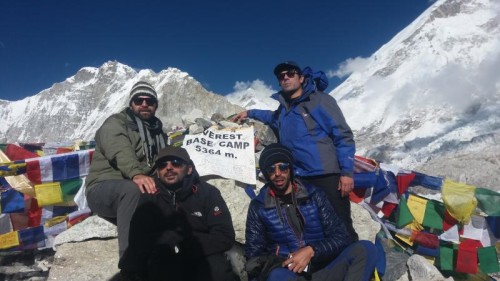
 USD 1340
USD 1340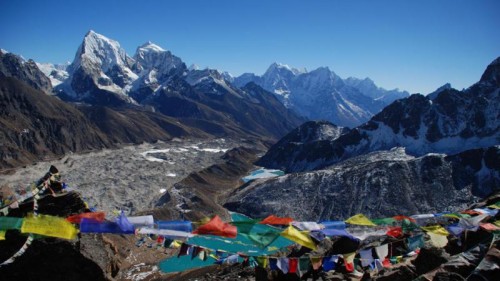
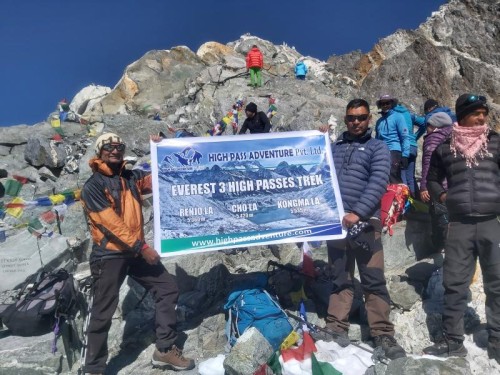
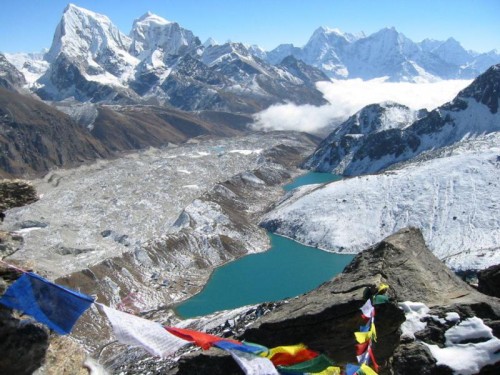
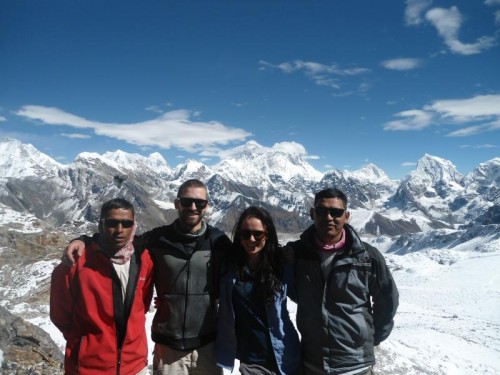

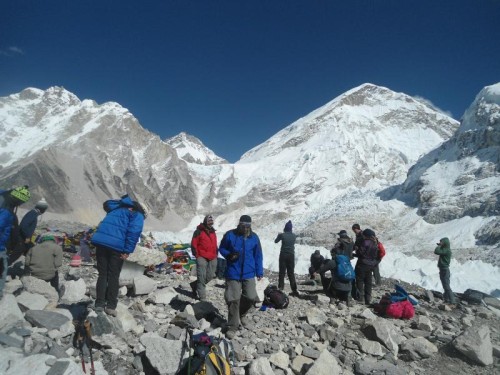
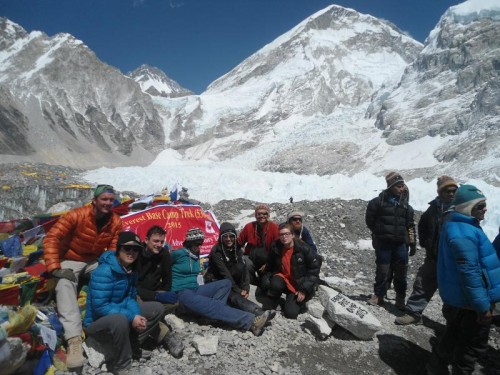

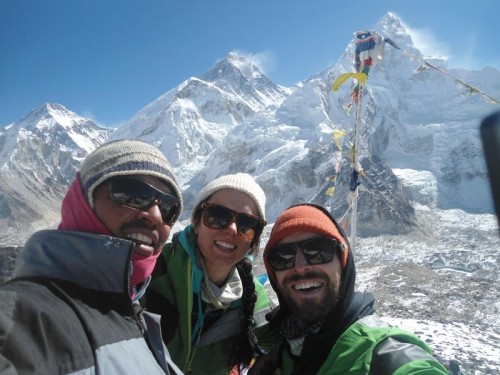
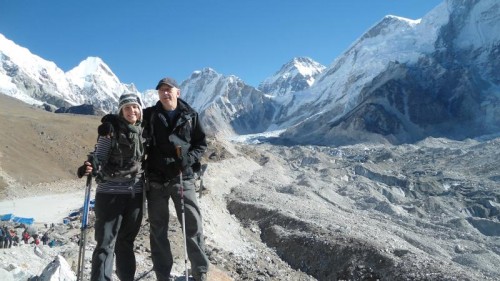
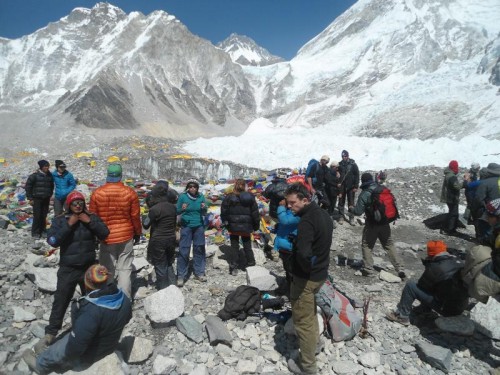
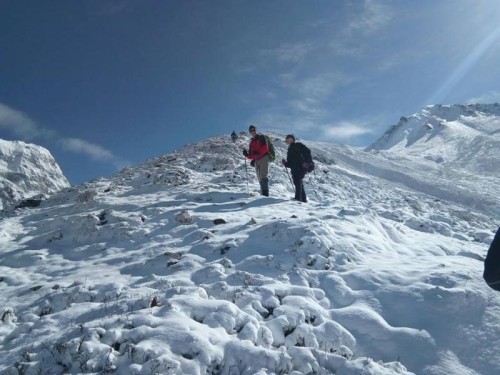

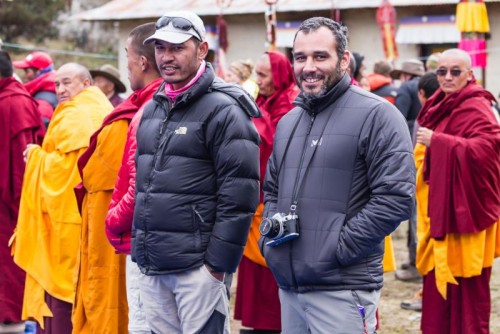
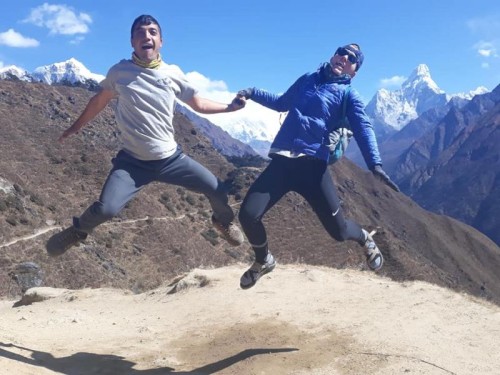

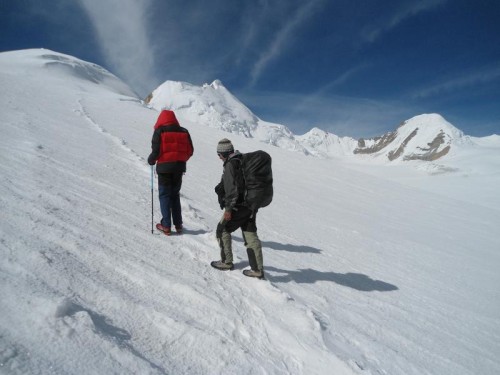
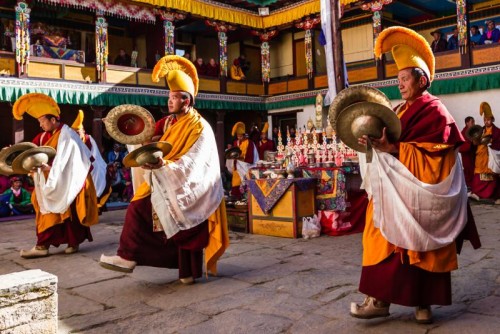
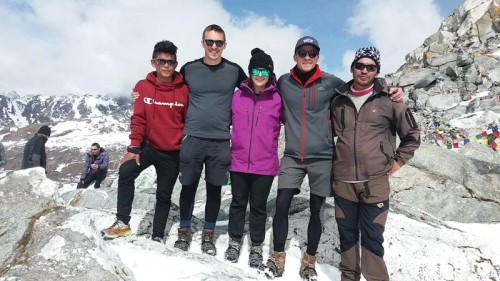

Neil Dass
South Africa
A Perfect Short Everest Base Camp Trek Completed in 10 Days
5th March, 2025
I cannot thank High Pass Adventure and the entire team enough for the incredible Short Everest Base Camp Trek experience they provided. From start to finish, their team went above and beyond to ensure everything was perfect. The itinerary was tailored to our preferences and well-paced, allowing us to fully immerse ourselves in the breathtaking landscapes while also giving us adequate time to acclimatize.
Purna shared attractive stories and introduced us to the local way of life, enriching the overall experience. The highlight of the trek was reaching Everest Base Camp and Kalapathar—an achievement I will appreciate forever. High Pass Adventure exceeded my expectations, and I heartily recommend them to anyone seeking a truly memorable Himalayan adventure in Nepal.